If your dog lunges, barks, and snaps when they see another dog as you’re out walking him on his leash, you might have a leash-aggressive dog. These are dogs that are Dr. Jekyll — that is, calm and well-behaved — when they’re around people or even when they’re around other dogs off-leash. But when you put on the leash, they turn into a veritable Mr. Hyde, and their leash aggression can cause you to change your routine which is no fun for anyone.
While these kinds of leash-aggressive dogs rarely actually bite another dog, you still likely feel terrible and even embarrassed by their behavior. It helps, though, to understand why they’re doing it and how you can change this aggressive behavior.
What Exactly Is Leash Aggression?

You might not realize it, but leash aggression is a pretty common problem. The dogs that show leash reactivity like this usually lack social skills for meeting and greeting other pups. They want contact with other dogs, but they lack the socialization behaviors to effectively say, “Hi, let’s be friends” in a less aggressive way when another dog approaches.
Dogs that lack those proper social skills lunge and bark at other dogs instead of playing it cool with subtle signals that say they want to form a relationship. Your dog feels stressed and frustrated as a result. They’re a little like that nerdy kid in middle school who spills his cafeteria tray of food all over the girl he desires to impress!
Like the nerdy kid, your leash-aggressive dog is also a little afraid of the other dogs, and if he were off-leash, he could naturally create what he feels is a safe distance. That’s part of the fight or flight response. Normally, your dog might choose to flee a threat, but that option is not available because he’s on the leash. Therefore, he feels his only option is to be aggressive to increase the distance between himself and the perceived threat — the presence of other dogs.
Of course, when dog owners see this kind of behavior when dog walking, their reaction is to pull their fearful dogs away to avoid any problems. That’s understandable, but unfortunately, it prevents your dog from learning the proper way to interact with his potential canine friends.
Additionally, if he’s afraid, pulling him away has given him what he wants; the distance between himself and the other dog has been increased so he sees this as a win.
What Causes Leash Aggression?
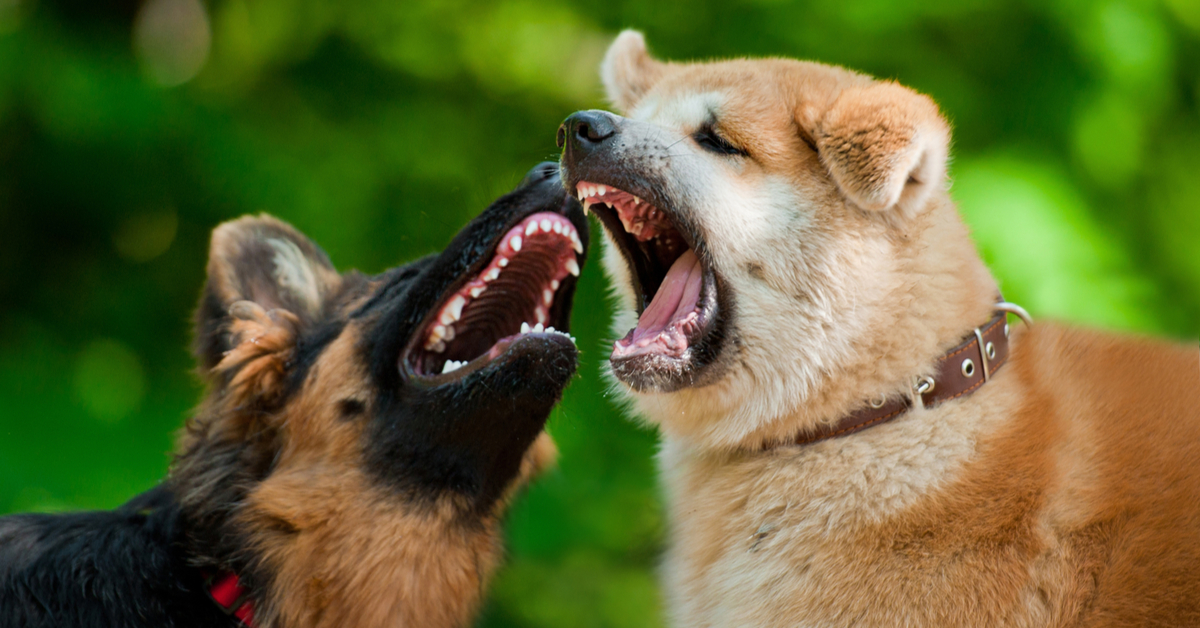
Aggression in under-socialized dogs is a fear-based response. The critical socialization period for dogs is during puppyhood, between approximately 8 and 14 weeks of age. This is when the part of their brain that processes fear is developing. If they don’t receive proper socialization during this time period, they can easily become leash-aggressive.
This happens because they have never learned that other dogs don’t have to be something to fear, and they have never learned how to politely greet other dogs. Basically, they’ve never learned the sniff technique! Aside from leash aggression, dogs that are not properly socialized can also develop other fearful behaviors.
Many young dogs also exhibit leash aggression if they have a lot of pent-up energy. The leash aggression in this case may just be a reactive behavior to that energy that has nowhere else to go.
Finally, dogs that have not gone through any formal dog training with pet owners often develop leash reactivity. These are the dogs that are always lunging and pulling at their leash, and when they see an approaching dog, that becomes more intense and is accompanied by snarling and barking too.
How Do I Prevent Leash Aggression?
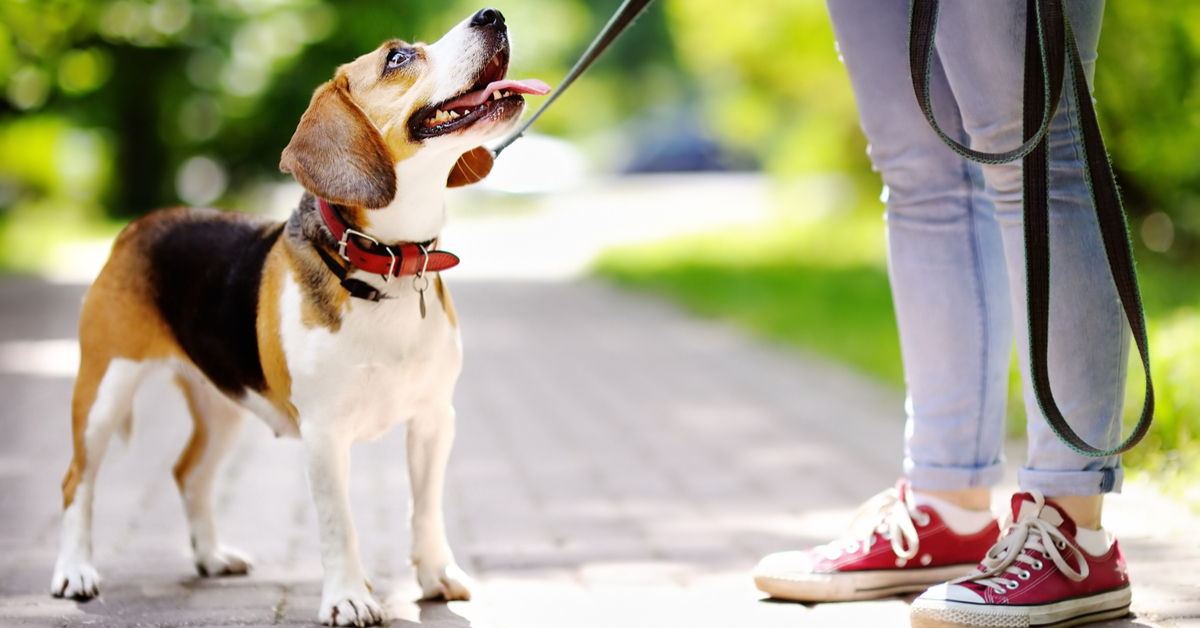
The best way to prevent leash aggression is to properly socialize your puppy. You want him to get out into the world so he can have experiences and positive interactions with other dogs, people, and other animals.
Basically, you want to be intentional in your dog training methods so that you can use desensitization techniques to expose him to the many stimulants in the world to which he might otherwise have a bad reaction or negative association. This is also where dog training classes can come in handy.
Once a puppy is accustomed to the sight of another dog as well as the proper behaviors he should use when greeting other dogs, he will be much more comfortable when walking on a leash.
Positive reinforcement
Along with these early training methods, you can pair the interactions your puppy has with other animals with positive reinforcement techniques. You can use healthy dog treats, for example, to help build a positive association in his mind between those interactions and those yummy treats. High-value treats also help to get your dog’s attention when leash walking so he’s focusing on you and not the approaching dog.
By carrying those treats with you on your walks, your dog will soon think, “I see an approaching dog! That means if I sit, I will get a yummy treat!” This kind of training is called counter-conditioning. It’s where you first desensitize your dog to the presence of other dogs, animals, and people head-on, and then, you train him to respond in a different way than what he feels is natural.
While positive reinforcement dog training, counter-conditioning, and good socialization can solve a lot of the problems with leash reactivity and leash aggression, sometimes it’s just a matter of excess energy. If you let your dog run around and play a while before you ask him to walk nicely on a leash, you can burn off that energy so he will behave when you go for a walk with the leash on.
What If My Dog Is Already Leash-Aggressive?
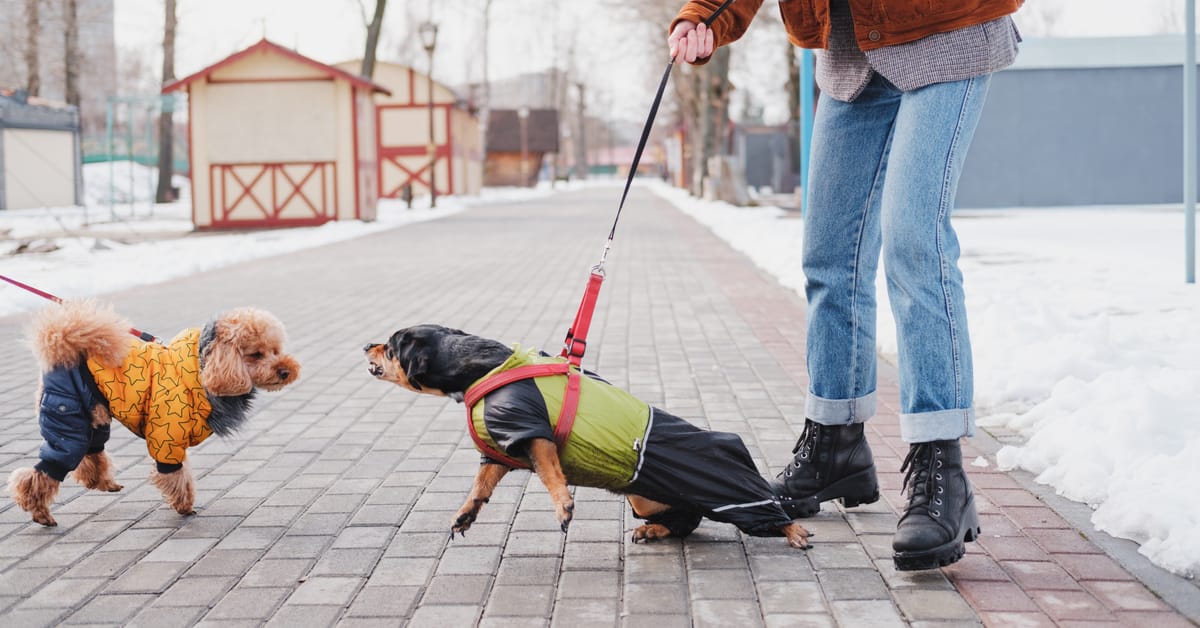
If you already have a leash-aggressive dog, then it might be necessary to work with a professional dog trainer, dog behaviorist, or veterinary behaviorist to help reduce his aggressive or reactive behavior. Whether you work with a dog trainer or not on your dog’s leash reactivity, the first step will be to identify just what is causing your dog’s behavior.
During reactive dog training, you’ll want to pay attention to what he is lunging at and when. Once you know what stimulates your dog’s behavior, you can work to desensitize him to the stimulus and begin counter-conditioning techniques to get him to change his response to the presence of other dogs, other animals, or people.
If your dog is a social dog, you want to teach him that lunging gets him nothing. Instead, if he acts calm, you’ll allow him to greet the other dog. To do this, walk your frustrated dog away from the source of his behavior and wait until he is calm. When he calms down, reward him with a dog treat, then allow him to greet the other dog on a loose leash.
Redirect, Don’t Punish
It’s also important that you don’t punish your dog for his leash aggression. Instead, redirect his attention to something more appropriate. This is part of using positive reinforcement techniques to train your dog to behave more appropriately.
Pay Attention to Body Language

Another important tip is that you should pay attention to your dog’s body language and the body language of the other dogs when they’re meeting and greeting. You want to make sure that neither is actually threatening the other; rather, they’re just greeting one another or checking each other out.
The American Kennel Club offers these tips about dog body language:
Tail wagging
Tail wagging doesn’t mean your dog is happy, only that he’s emotionally aroused, and the faster the wag, the more aroused the dog. A 2007 study showed that when the tail was wagging more to the right, it meant the dog was experiencing positive associations with the stimulus, but if it’s moving more to the left, it indicates more of a fear response and is associated more strongly with withdrawal responses.
Raised hackles
Raised hackles, also known as piloerection, where the hair on the shoulders or back is raised, isn’t necessarily negative. Again, it may mean the dog is aroused which could be negative, but it could also mean he’s intensely interested in something.
Posture
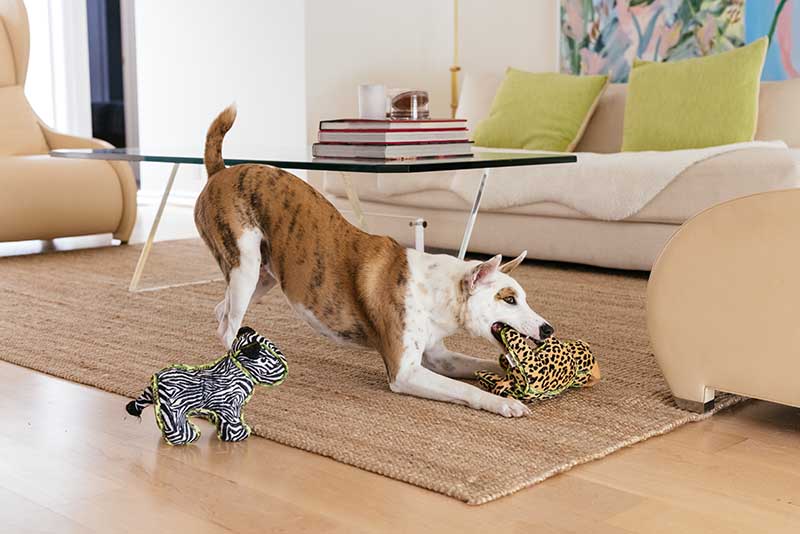
Posture can also tell you a lot about your dog’s emotions. You should pay particular attention to his posture when he’s greeting other dogs.
A cowering dog is signaling fear or stress. He’s trying to look smaller and non-threatening. A dog whose weight is shifted forward and is standing upright is trying to get closer to the object of his interest. That can be because he wants to greet the other animal or person, or it can be aggressive body language too.
If his tail is held high and twitching, that’s usually a sign of aggression. Playful dogs often exhibit the play bow where they place their chest on the ground and their rump in the air.
A raised paw, especially in certain dog breeds like the English setter, can mean the dog perceives there is prey nearby. If he’s not hunting, however, it can mean he feels somewhat insecure.
Facial expressions
Facial expressions are other signals to pay attention to when dogs meet on the leash. Yawning means he feels stressed, lip licking means he feels anxious. Smiling can be a warning sign, but it can also be a submissive body language indicator. In the case of the latter, it’s often paired with a loose, wiggly body posture.
Eyes and eye contact
Eyes and eye contact are another important body language indicator of your dog’s mood. If his eyes are soft, meaning the lids are relaxed and it kind of looks like he’s squinting, that’s a happy, calm pooch. If his eyes are hard, that’s a negative sign. Hard eyes are cold eyes and can indicate he’s guarding something or in an aggressive mood.
Prolonged eye contact also often signals aggression, while looking away is a calming sign. If your dog is stressed, however, he might look away and avoid eye contact. If he shows the whites of his eyes, something called ‘whale eye,’ it means he is very anxious.
Change Your Dog’s Mind
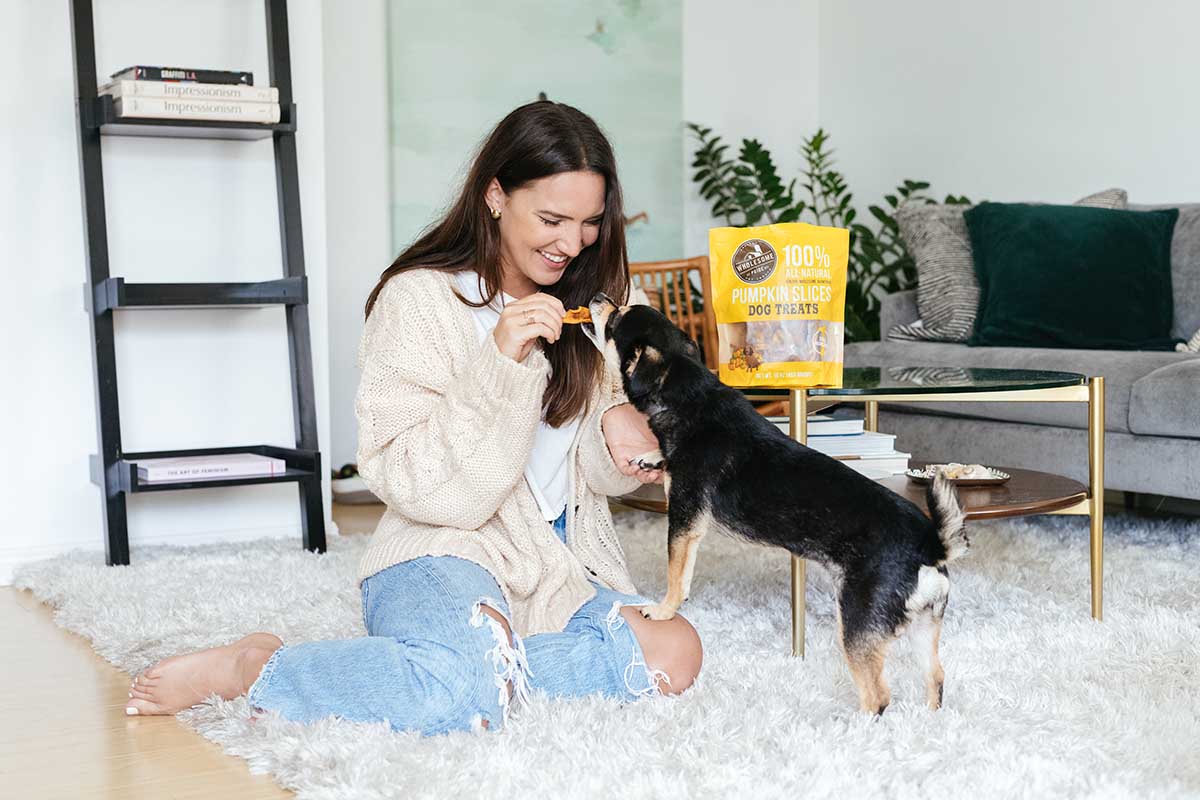
This is where the positive reinforcement and counter-conditioning training techniques come into play. If you notice by your dog’s body language that he is curious and not feeling uncomfortable at the sight of another dog, then give him a treat to help him make a positive association.
You can also praise him and play with him to change his focus if his body language indicates aggression. If you fear he might bite another dog, you can also use a basket muzzle while you’re working with him so he can’t actually attack. This may diminish his aggressive behavior because it takes away his main weapon, his teeth.
Once your dog learns to associate the presence of other dogs with positive reinforcement from you, he’ll start to change his mind about acting aggressively or in a fearful manner.
Desensitization
If your dog is overly fearful of other dogs, you may need to work at desensitization more. You should start slowly and go at his pace. You might begin with having a friend bring their calm, non-reactive dog to help you.
Begin by having them stand a safe distance away so that your dog is comfortable. As long as your dog shows no signs of discomfort, have them move a little closer. Be sure to praise your dog effusively while you’re doing this.
At any sign of a negative reaction, just turn and walk away with your dog until he feels calmer. If he’s reacting too negatively, you might have moved too fast. Have your assistant move back away to a distance where your dog is relaxed, and then start again.
As your dog responds positively to these training sessions, you can begin to expand it to include more and different dogs as well as other stimulants that cause him to react. At some point, you might even be able to take him to a dog park to train him there, but only when he’s ready.
How Long Will the Dog Training Take?
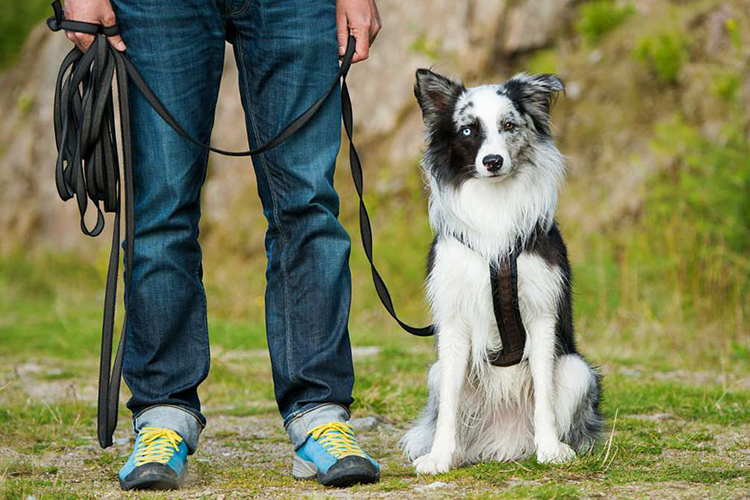
The length of time it may take your dog to change his leash-aggression behaviors really depends on your dog’s level of discomfort. The important thing through all of this is that you should stay calm. Continue to use positive reinforcement to help your dog get over his frustration and tension.
Patience is key. You don’t want to move too fast by forcing your dog into face-to-face confrontations with other dogs when they still feel uncomfortable or stressed. You want to wait for this kind of interaction only when your dog is indicating he is ready for it.
When that day comes, let him have that face-to-face moment for a few seconds before drawing them away from one another. Then, praise your dog effusively and give him a dog treat. The more positive associations you can help him make, the quicker the training will proceed. Working with a dog trainer can also help speed things up.
Before you know it, your dog will be one of those friendly dogs that everyone loves instead of a leash reactive dog and one that is fearful and aggressive toward other animals.
Final Thoughts
Leash aggression is one of those problems that can really ruin the fun of taking your dog for a walk. But it’s only a sign that he was never properly socialized. By using some of these dog training techniques to help him make positive associations between the presence of other dogs and being on the leash with you, you can change your dog’s mind and behavior.
All it takes is time, patience, and lots of loving positive reinforcement to turn your leash reactive dog into a fun-loving friendly pooch!

